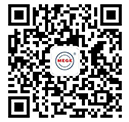The Intrinsic Pitch Cones in Hypoid Gears
21 Oct,2025

Bevel gears fall into two categories: the non-offset bevel gears (including straight bevel gears and spiral bevel gears) and the hypoid gears. An idealized non-offset bevel gear pair can be visualized as two cones rolling on each other without sliding. These cones are commonly referred to as pitch cones, and their angles can be calculated based on explicit relationships to the gear ratio and the shaft angle (Ref. 1). In the case of hypoid gears (i.e., bevel gears with hypoid offset), the two rolling cones are replaced with one sheet hyperboloids. In the axial sections of the gears, these hyperboloids are represented as curves, which are usually simplified to straight lines, and so cones are created, which are again referred to as pitch cones. Due to the nature of hyperboloids, an infinite number of hyperboloid configurations exist for each hypoid gear set; therefore, additional criteria need to be applied to select a specific configuration. These criteria include checking the limit radius of curvature of the tooth trace (Ref. 1) and optimizing the contact ratio (Ref. 2). Consequently, the pitch cones can only be calculated iteratively, and they depend not only on gear ratio and shaft angle (as in the case of non-offset bevel gears), but also on hypoid offset, tool radius and other factors (Ref. 1). Considerations on an actual face cutter having different radii on its internal and external sides and at different profile heights, on a tilted face cutter having local radius of curvature dependent on further parameters, and on contact ratio being derived from tooth contact analysis lead to the conclusion that when pitch cones are calculated this way, they are dependent on specific gear cutting technology, tooling and microgeometry modifications. Therefore, a method for calculating pitch cones in hypoid gears based on macrogeometry parameters similar to that used in the case of non-offset gears is sought after in this paper.












